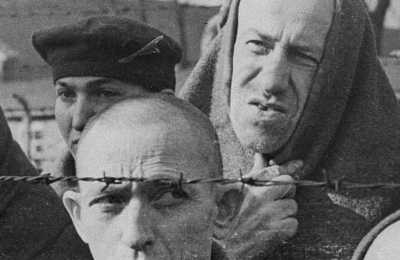Liberation of The Netherlands
After the Allied landing in Normandy in June 1944, the western Allies rapidly advanced in the direction of the Dutch border. Tuesday 5 September is known as Dolle dinsdag ("mad Tuesday") the Dutch began celebrating, believing they were close to liberation. In September, the Allies launched Operation Market Garden, an attempt to advance from the Dutch-Belgian border across the rivers Meuse, Waal and Rhine into the north of the Netherlands and Germany. However, the Allied forces did not reach this objective because they could not capture the Rhine bridge at the Battle of Arnhem. During Market Garden, substantial regions to the south were liberated, including Nijmegen and Eindhoven.
Parts of the southern Netherlands were not liberated by Operation Market Garden, which had established a narrow salient between Eindhoven and Nijmegen. In the east of North Brabant and in Limburg, British and American forces in Operation Aintree managed to defeat the remaining German forces west of the Meuse between late September and early December 1944, destroying the German bridgehead between the Meuse and the Peel marshes. During this offensive the only tank battle ever fought on Dutch soil took place at Overloon.
At the same time, the Allies also advanced into the province of Zeeland. At the start of October 1944, the Germans still occupied Walcheren and dominated the Scheldt estuary and its approaches to the port of Antwerp. The crushing need for a large supply port forced the Battle of the Scheldt in which First Canadian Army fought on both sides of the estuary during the month to clear the waterways. Large battles were fought to clear the Breskens Pocket, Woensdrecht and the Zuid-Beveland Peninsula of German forces, primarily "stomach" units of the Wehrmacht as well as German paratroopers of Battle Group Chill.
By 31 October, resistance south of the Scheldt had collapsed, and the Canadian 2nd Infantry Division, British 52nd (Lowland) Division and 4th Special Service Brigade all made attacks on Walcheren Island. Strong German defenses made a landing very difficult, and the Allies responded by bombing the dikes of Walcheren at Westkapelle, Vlissingen and Veere to flood the island. Though the Allies had warned residents with pamphlets, 180 inhabitants of Westkappelle died. The coastal guns on Walcheren were silenced in the opening days of November and the Scheldt battle declared over; no German forces remained intact along the 64 mi (103 km) path to Antwerp.
Following the offensive on the Scheldt, Operation Pheasant was launched in conjunction to liberate North Brabant. The offensive after some resistance liberated most of region; the cities of Tilburg, s-Hertogenbosch, Willemstad and Roosendaal were liberated by British forces. Bergen Op Zoom was taken by the Canadians and the Polish 1st Armoured Division led by General Maczek liberated the city of Breda without any civilian casualties on 29 October 1944. The operation as a whole also broke the German positions which had defended the region along its canals and rivers.
The Dutch government had not wanted to use the old water line when the Germans had invaded in 1940. It was still possible to create an island out of the Holland region by destroying dikes and flooding the polders, this island contained the main cities. The Dutch government had decided that there were too many people would die to justify the flooding. However, Hitler ordered that Fortress Holland be held at any price. Much of the northern Netherlands remained in German hands until the Rhine crossings in late March 1945.
Hunger Winter
The winter of 1944 - 1945 was very harsh, which led to "hunger journeys" and many cases of starvation, exhaustion, cold and disease. This winter is known as the Hongerwinter or the Dutch famine of 1944. In response to a general railway strike ordered by the Dutch government-in-exile in expectation of a general German collapse near the end of 1944, the Germans cut off all food and fuel shipments to the western provinces in which 4.5 million people lived. Severe malnutrition was common and 18,000 people starved to death. Relief came at the beginning of May 1945.
FInally the nation was liberated by Canadian forces, British infantry divisions, the British I Corps, the 1st Polish Armoured Division, American, Belgian, Dutch and Czechoslovak troops. Parts of the country, in particular the south-east, were liberated by the British Second Army which included American and Polish airborne forces (Operation Market Garden) and French airbornes (Operation Amherst). On 5 May 1945 the Canadian General Charles Foulkes and the German Commander-in-Chief Johannes Blaskowitz reached an agreement on the capitulation of German forces in the Netherlands in Hotel de Wereld in Wageningen. One day later the capitulation document was signed in the auditorium of Wageningen University located next door.
After liberation in 1945, Liberation Day was celebrated every five years. In 1990 the day was declared a national holiday when liberation would be remembered and celebrated every year. On May 4 the Dutch hold "Dodenherdenking" Remembrance of the Dead for the people who fought and died during World War II and in wars in general. There are remembrance gatherings all over cities and in the country, the better-known at the National Monument on Dam Square in Amsterdam and at the Waalsdorpervlakte in the dunes near The Hague, one of the infamous Nazi execution sites. Throughout the country two minutes of silence is observed at 8 pm. On May 5 the liberation is celebrated and festivals are held at most places in the Netherlands with parades of veterans and 14 musical festivals through the whole country.










